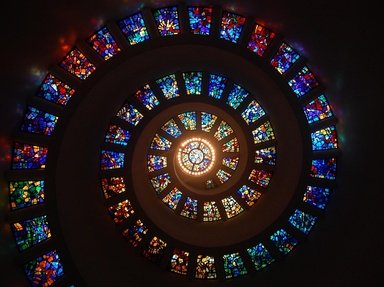Quiz Answer Key and Fun Facts
1. The ancient festival of the winter solstice, observed on the longest night of the year in northern Europe, goes by what name?
2. In some Christian churches, at the end of Holy Week, just before Easter, services are held in which lights are gradually extinguished, ending with the sanctuary in complete darkness. What word is used to describe such a service?
3. In Exodus 10, Moses stretches out his hand toward heaven and thick darkness falls on Egypt. How long does the darkness of this, the ninth plague, last?
4. What ancient goddess associated with the night, recognized by Wiccans and other modern-day pagans, is sometimes depicted in three aspects: the maiden, the mother, and the crone?
5. What Hindu goddess, the consort of Shiva, has a name that means "the black one" and is associated with time and death?
6. Some Muslims have been blessed to touch or kiss the black stone embedded in the wall of the Kaaba, as they circle the most sacred site of the Islamic faith. One of the five pillars of Islam, what is this pilgrimage to Mecca called?
7. Crossing a river or other body of water is a motif that recurs in many religions, often signifying a symbolic or actual passage into a promised land or into the afterlife. What word describing darkness is associated with the River Styx in Greek myths of crossing into the underworld?
8. In John 3:19 (NIV), Jesus says, "This is the verdict: Light has come into the world, but people loved darkness instead of light because their deeds were evil." With whom is Jesus talking in this nighttime conversation?
9. What Christian hymn, composed in 1818, was declared by UNESCO in 2011 to be an intangible cultural heritage of Austria?
10. In his epic reworking of Christian theology in "Paradise Lost" John Milton uses a memorable oxymoron to refer to the utter absence of light surrounding Satan after he is cast out of heaven. What phrase does the poet use to describe what Satan "sees"?
Source: Author
nannywoo
This quiz was reviewed by FunTrivia editor
CellarDoor before going online.
Any errors found in FunTrivia content are routinely corrected through our feedback system.

